
After doing a guided walk to some of Delhi’s ancient baolis (stepwells) I decided to explore more of them. I’d been living in the city for 5 years and though I knew of one in Nizamuddin near where I live, I had no idea there were so many and that they were so beautiful. I was particularly astonished to find one hidden so close to Delhi’s high-rise financial district, Connaught Place, presenting a classic collision of old and new. At the turn of the last century Delhi had more than 100 baolis, now many of them have caved in or dried up owing to the declining water table as this was what kept them full rather than rainfall. If you look at pictures from the 70’s they used to be almost full with water. The fact that most are dry now* is indicative of India’s burgeoning city populations and the relentless demand for water, much of it siphoned directly from the water table through illegal boreholes by the populace. This in turn is indicative of the Indian governments failure to provide sufficient water to its own people. Currently their number has shrunk to about 15 according to the ASI (Archaological Survey of India) and sadly today most are neglected, overlooked or locked to prevent accidental drownings. Still, the ones that remain are as magical as they are majestic and frequented now mostly by occasional tour groups, school children, lovers, pilgrims and others seeking a rare place of peace amid Delhi’s madding crowds.

Baolis are examples of the many types of storage and irrigation tanks that were developed in India, mainly to cope with seasonal fluctuations in water availability. Most common in western India, they may also be found in the other more arid regions of the subcontinent, extending into Pakistan.The majority of surviving stepwells originally also served a leisure purpose because the base of the well provided relief from daytime heat. Stepwells also served as a place for social gatherings and religious ceremonies. Usually, women were more associated with these wells because they were the ones who collected the water and it was they who prayed and offered gifts to the goddess of the well for her blessings. This led to the building of some significant ornamental and architectural features often associated with dwellings, it also ensured their survival as monuments. Stepwells usually consist of two parts: a vertical shaft from which water is drawn and the surrounding inclined subterranean passageways, chambers and steps which provide access to the well. The galleries and chambers surrounding these wells were often carved profusely with elaborate detail and became cool, quiet retreats during the hot summers. The National published a selection of images from this story in their Review (hard copy) and on their National View blog here.

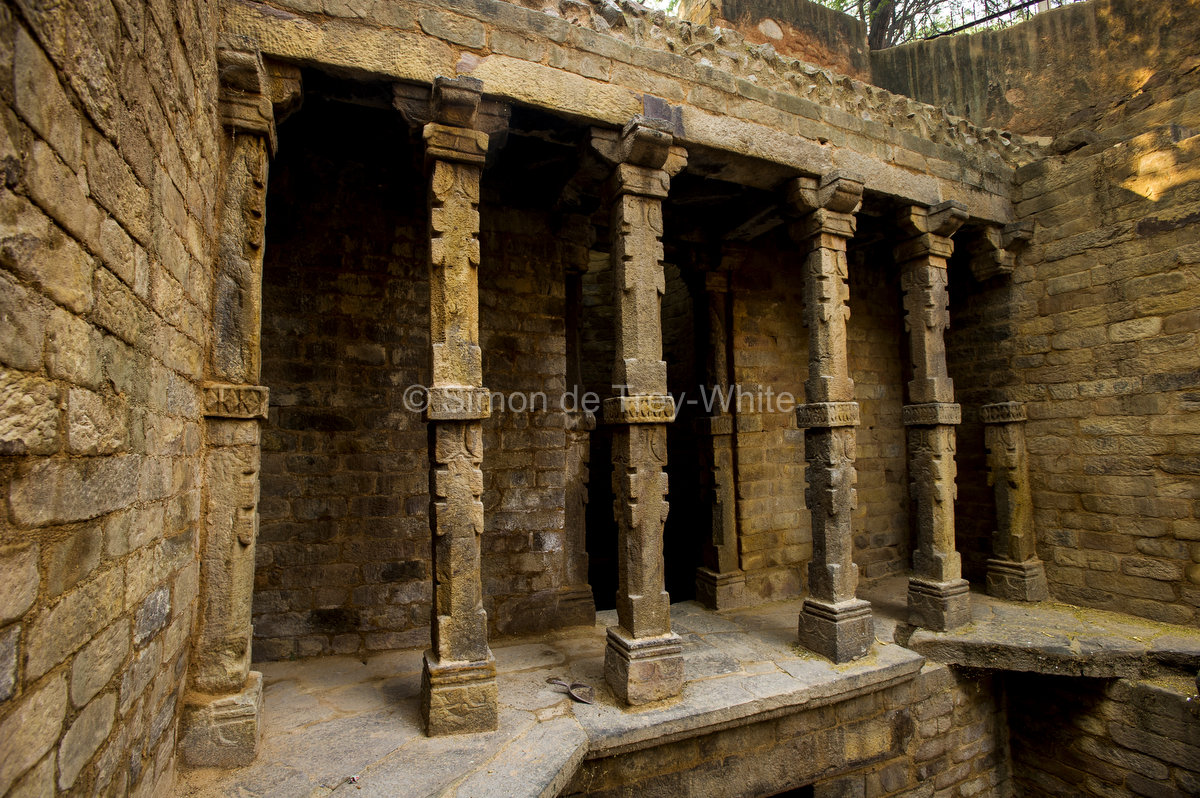


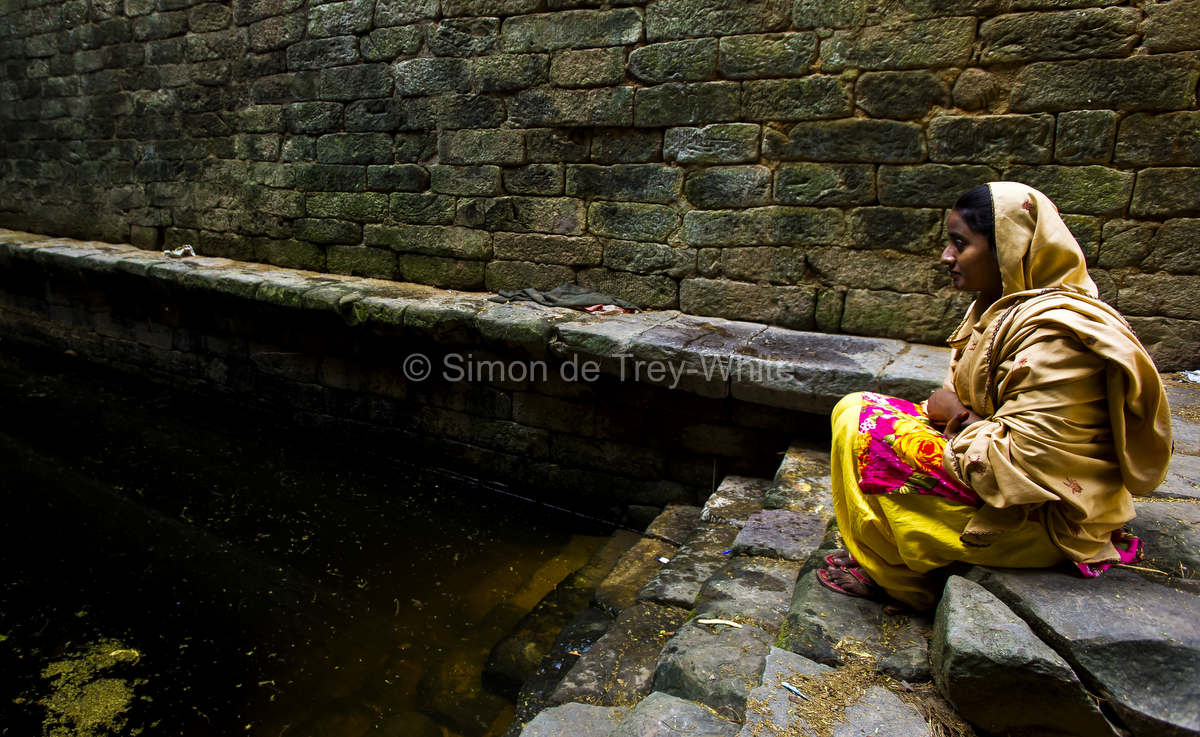



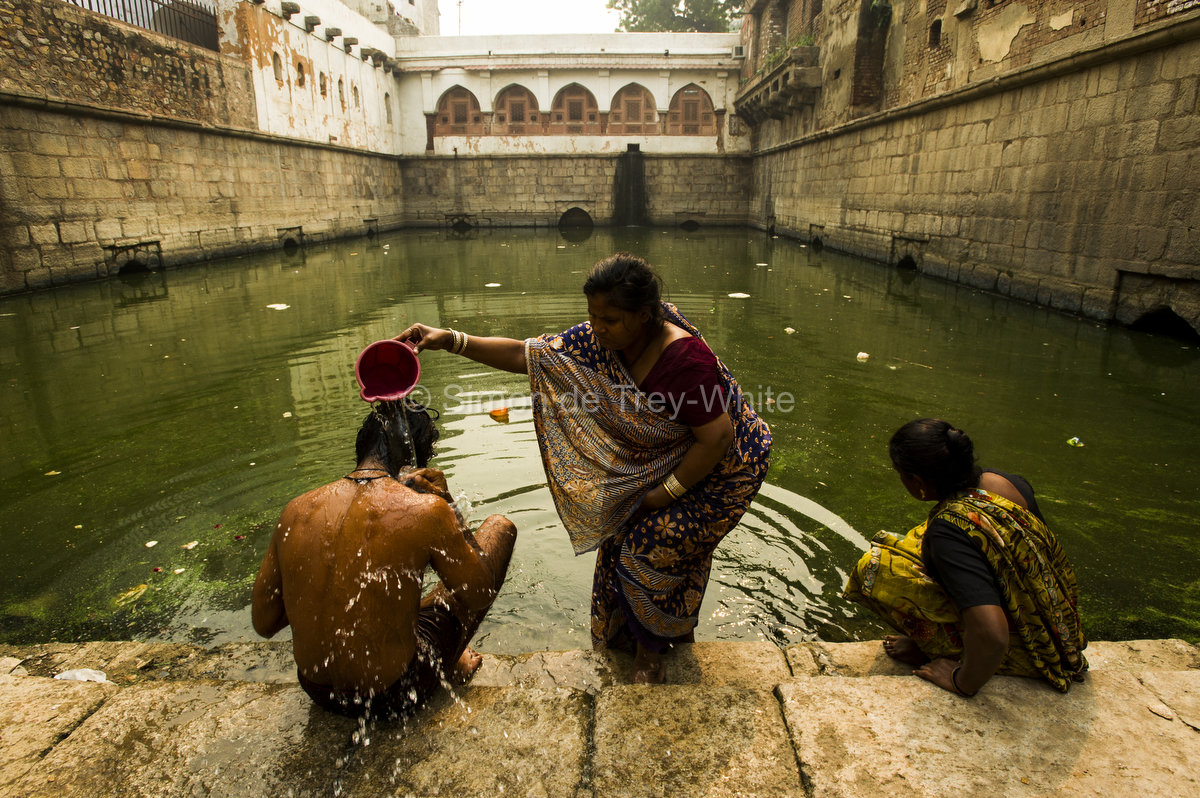

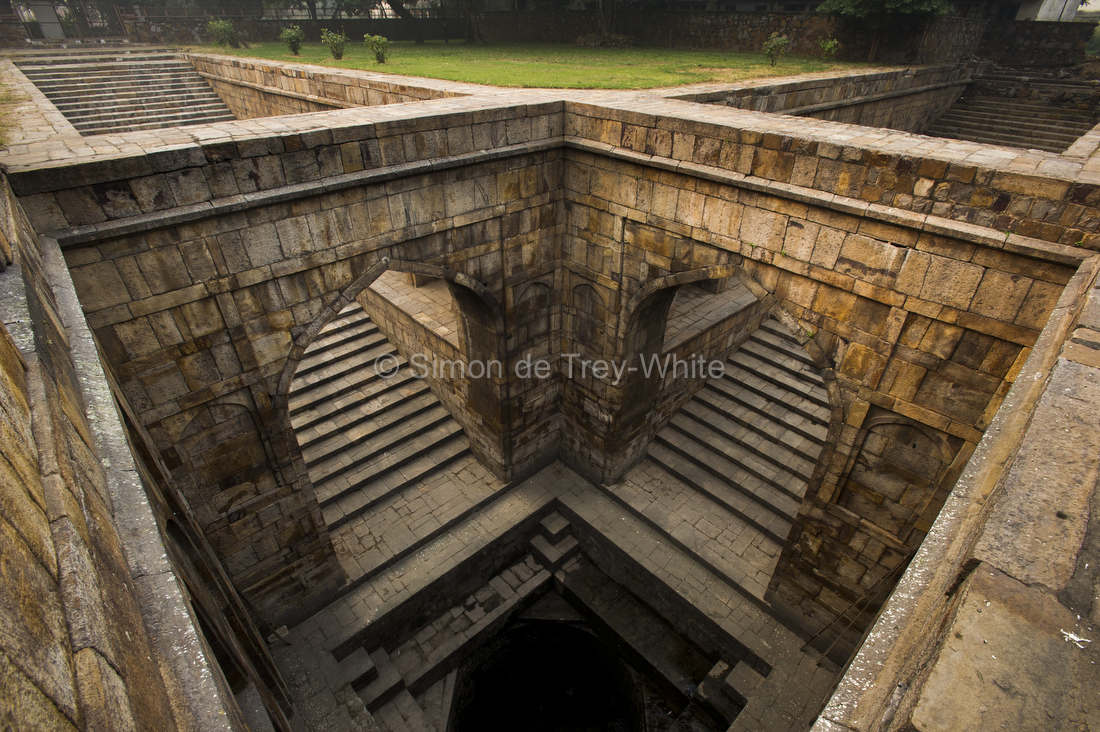

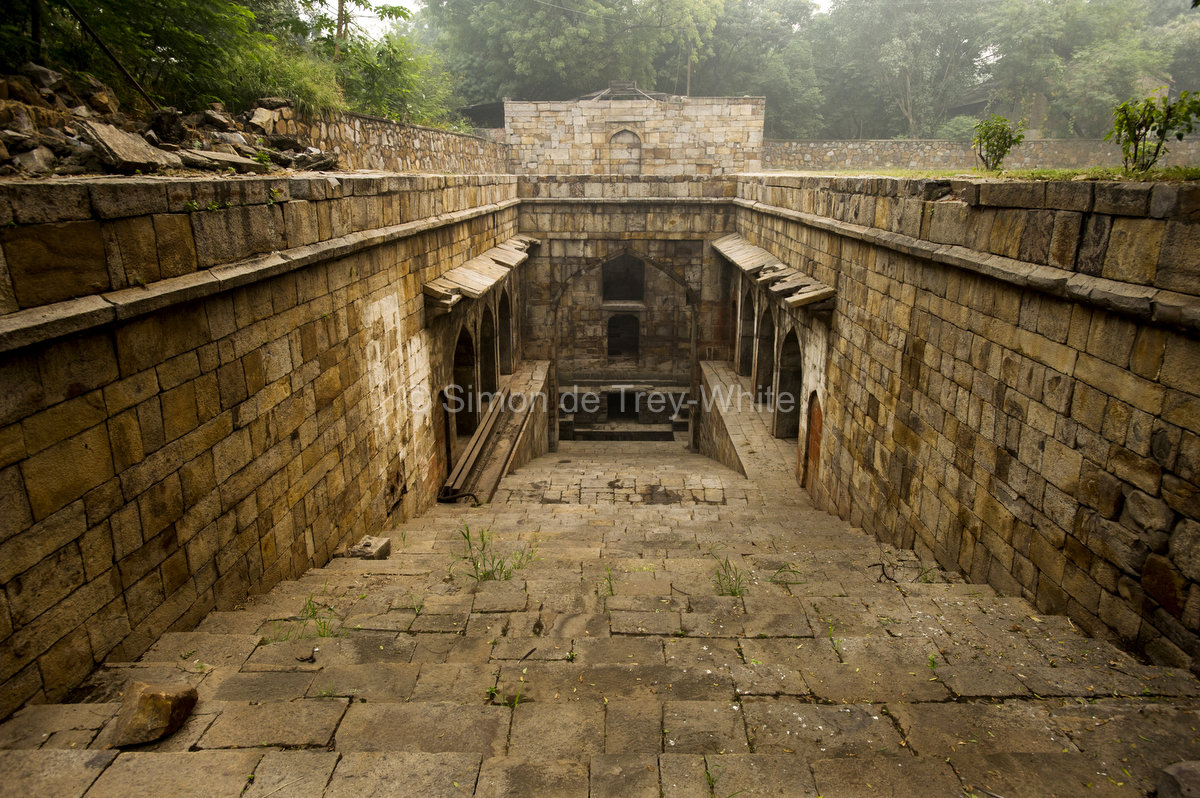
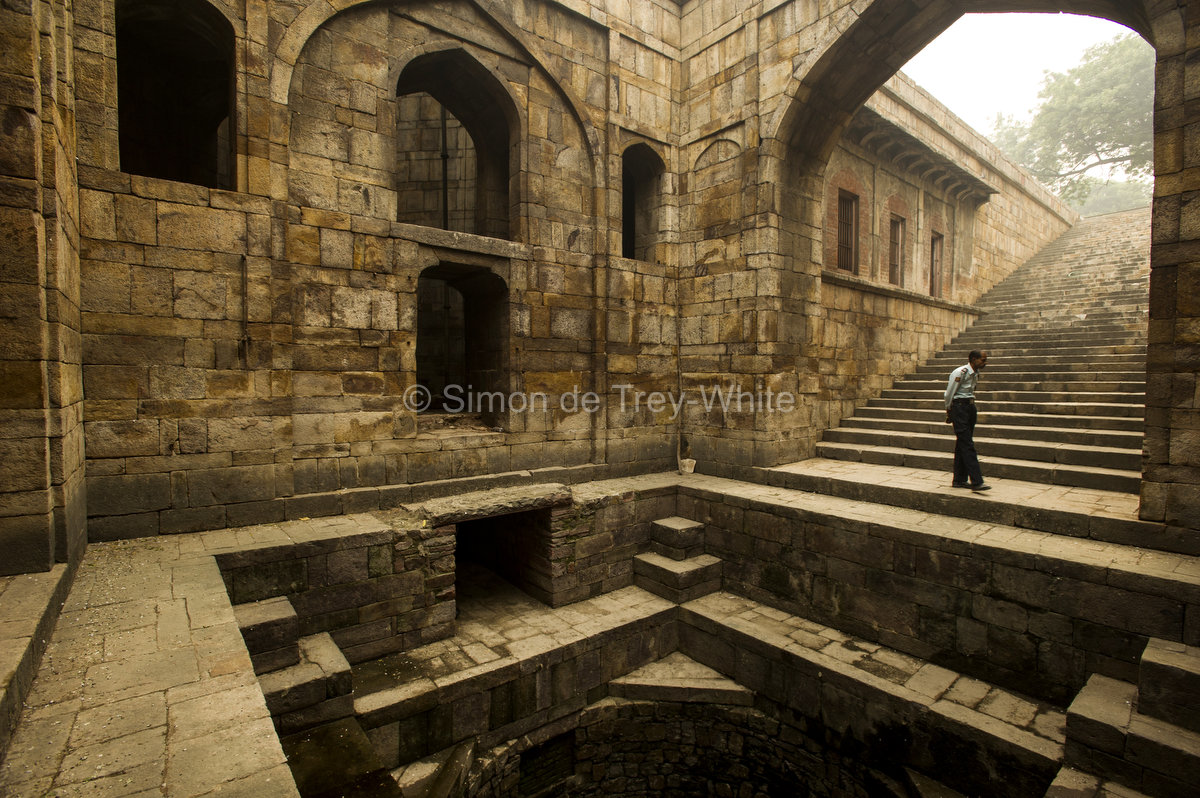




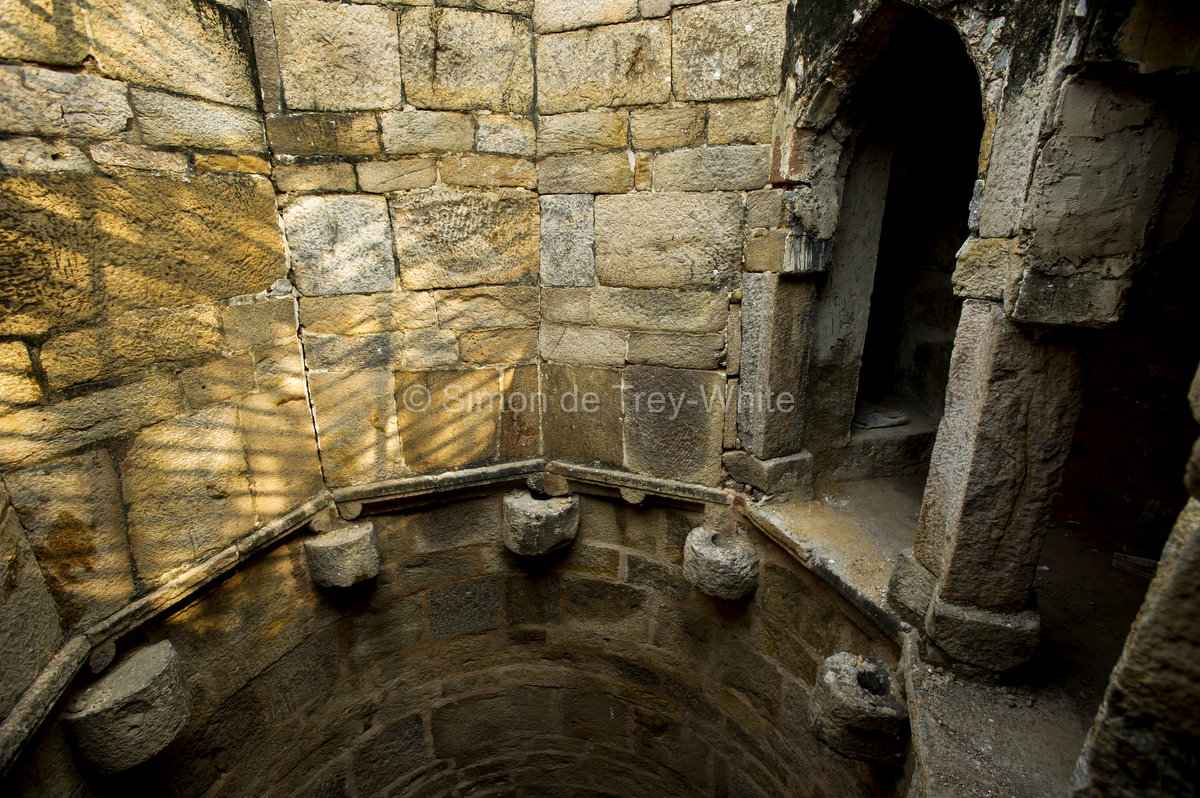



4th February 2016 Note: After a desilting project ordered by the High Court that reportedly took 10 years, Rajon Ki Baoli now has water in it again as can bee seen by the photograph above. This raises hopes that some of the other dry baolis in Delhi might also be able to be restored to life and that the dwindling water table might not be the only reason they are dry.
Method: all natural light, Nikon D700, D3s and Canon S90
Marvelous!!
Thank you!
Hey Simon,
This are hidden jewels, unearthed and beautifully depicted in your pictures! Thanks for sharing!
Cheers!
Priti
Thanks Priti!
oh my god, they really dive into this mucky water???
great pics, Simon.
Fascinating – bit like our Roman Bath’s
Yes sort of!
Simon,
Stunning photographs (as always)and a rare glimpse into an almost ‘covered over’ past.
Good job that the health and safety culture has not reached India yet or they would be closed off for ever!!
Thanks Gordon and you’re quite right!
Really nice!
Thank you!
Hi Simon
These are absolutely fascinating and beautiful places, perhaps all the more so for being practically deserted. They must have come from tremendous wealth judging by the workmanship. Thank you for sharing these lovely images: it makes me want to come and see them for myself!
Sarah
Thanks Sarah if you get the chance you should!
Thanks for all the appreciation everyone. Carmen: yes indeed and in fact this is pretty clean water in comparison to the Yamuna as it passes by Delhi! Gordon: well there is some Health & Safety in the fact that several of the baolis are kept locked due to tragic accidental child drownings, – notably the one in Feroz Shah Kotla. The Red Fort and Purana Qila baolis are also locked.
B’ful pics Simon. It reminds me of the ones we have in my hometown. There is a baoli in Lucknow’s Imambara as well but water has been drained out for some inexplicable reason, probably to prevent accidents. Do visit, if possible.
Thank you Nilu, I’d like to!